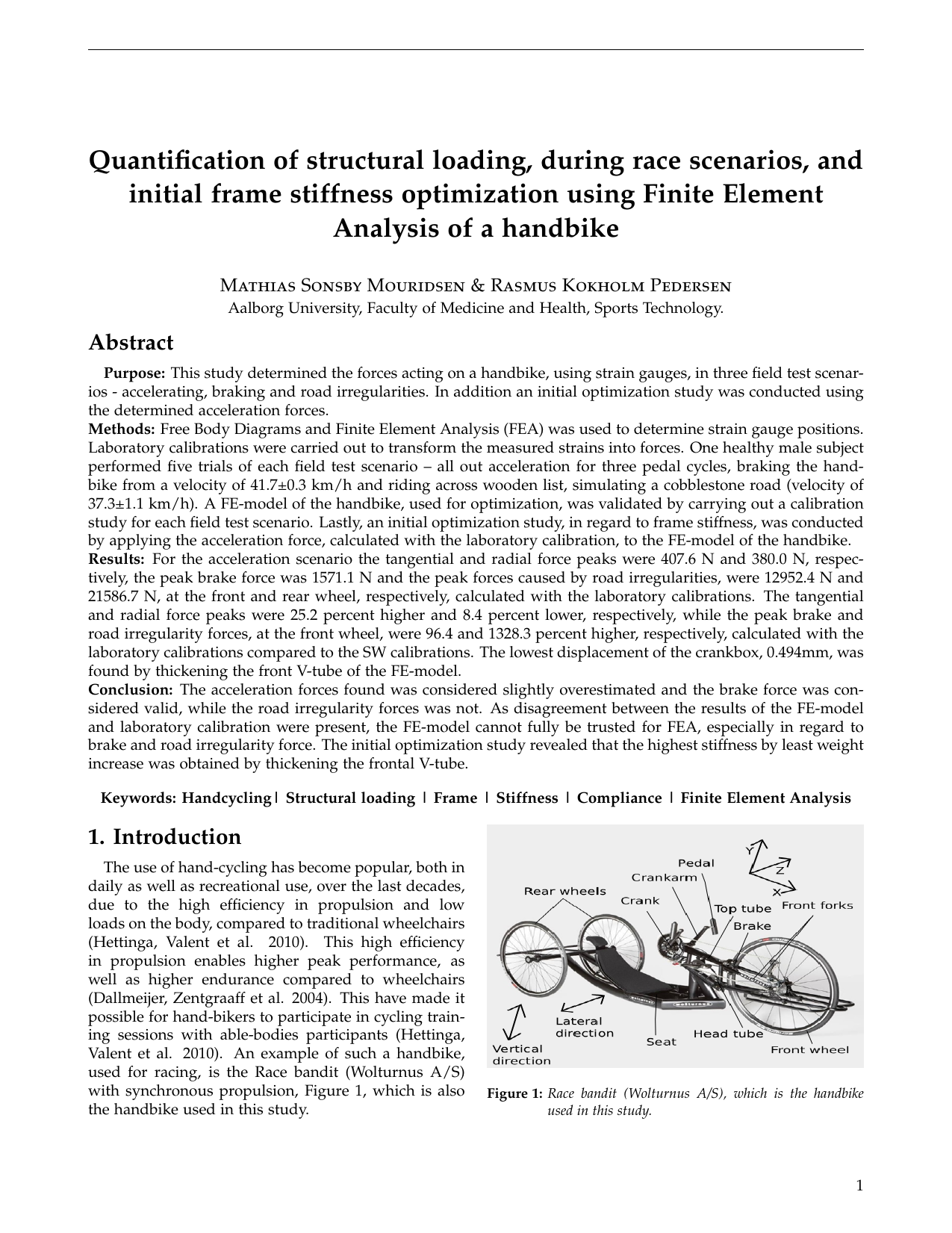
Quantification of structural loading, during race scenarios, and initial frame stiffness optimization using Finite Element Analysis of a handbike
Translated title
Kvantificering af strukturelle belastninger under løbs scenarier og indledende optimering af cykelstel-stivhed ved hjælp af Finite Element Analysis på en håndcykel
Term
4. semester
Education
Publication year
2016
Submitted on
2016-06-02
Pages
76
Abstract
Purpose: This study determined the forces acting on a handbike, using strain gauges, in three field test scenarios - accelerating, braking and road irregularities. In addition an initial optimization study was conducted using the determined acceleration forces. Methods: Free Body Diagrams and Finite Element Analysis (FEA) was used to determine strain gauge positions. Laboratory calibrations were carried out to transform the measured strains into forces. One healthy male subject performed five trials of each field test scenario – all out acceleration for three pedal cycles, braking the handbike from a velocity of 41.7±0.3 km/h and riding across wooden list, simulating a cobblestone road (velocity of 37.3±1.1 km/h). A FE-model of the handbike, used for optimization, was validated by carrying out a calibration study for each field test scenario. Lastly, an initial optimization study, in regard to frame stiffness, was conducted by applying the acceleration force, calculated with the laboratory calibration, to the FE-model of the handbike. Results: For the acceleration scenario the tangential and radial force peaks were 407.6 N and 380.0 N, respectively, the peak brake force was 1571.1 N and the peak forces caused by road irregularities, were 12952.4 N and 21586.7 N, at the front and rear wheel, respectively, calculated with the laboratory calibrations. The tangential and radial force peaks were 25.2 percent higher and 8.4 percent lower, respectively, while the peak brake and road irregularity forces, at the front wheel, were 96.4 and 1328.3 percent higher, respectively, calculated with the laboratory calibrations compared to the SW calibrations. The lowest displacement of the crankbox, 0.494mm, was found by thickening the front V-tube of the FE-model. Conclusion: The acceleration forces found was considered slightly overestimated and the brake force was considered valid, while the road irregularity forces was not. As disagreement between the results of the FE-model and laboratory calibration were present, the FE-model cannot fully be trusted for FEA, especially in regard to brake and road irregularity force. The initial optimization study revealed that the highest stiffness by least weight increase was obtained by thickening the frontal V-tube.
Keywords
Documents
